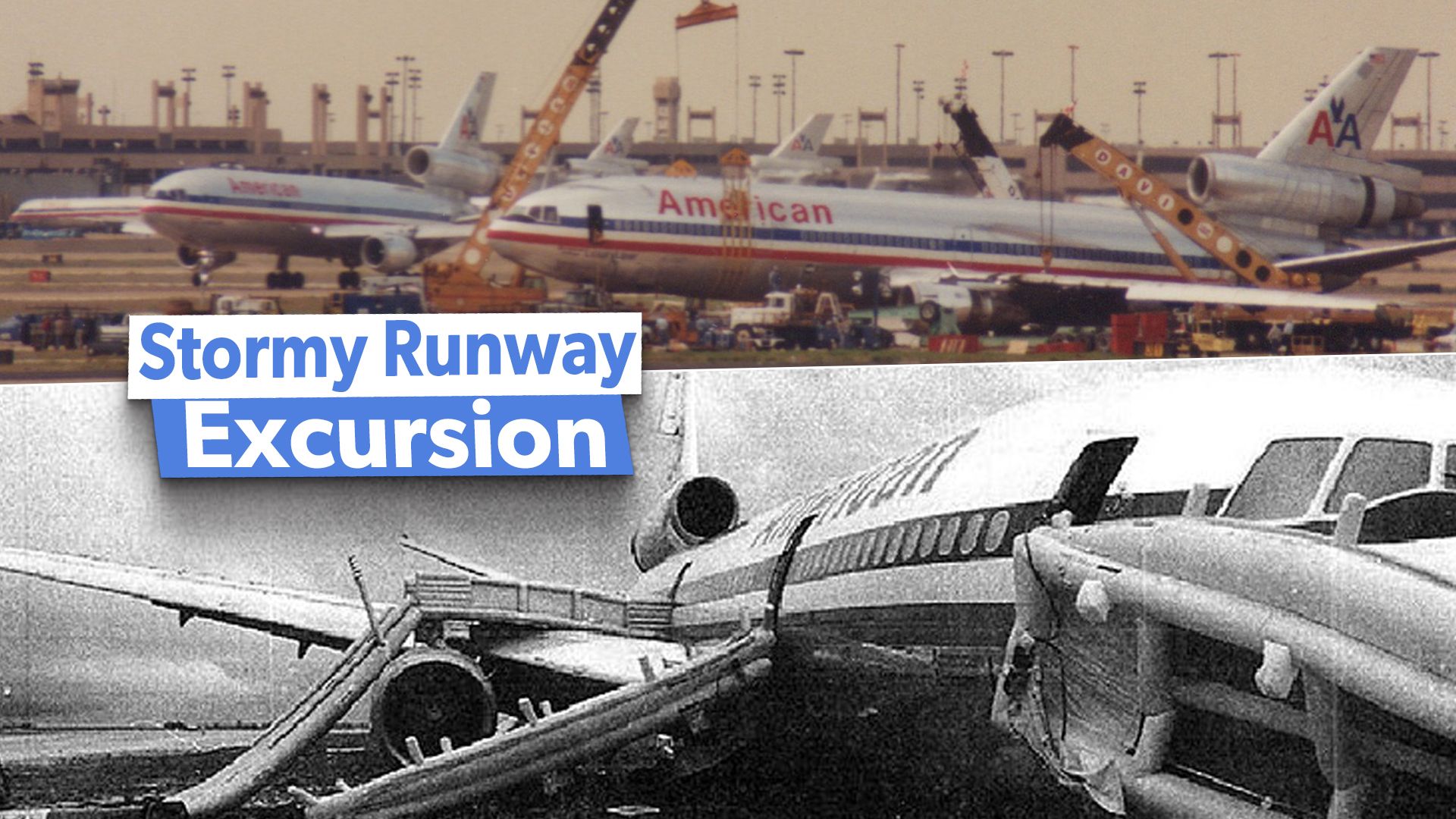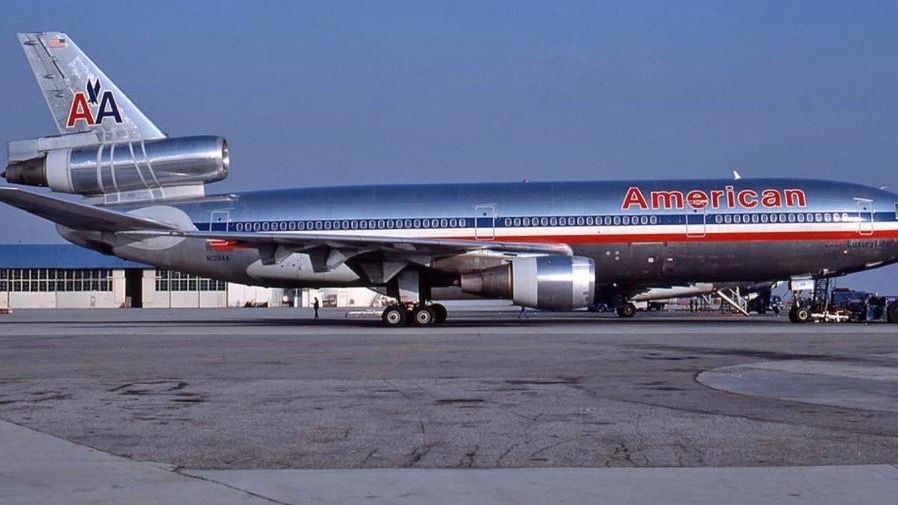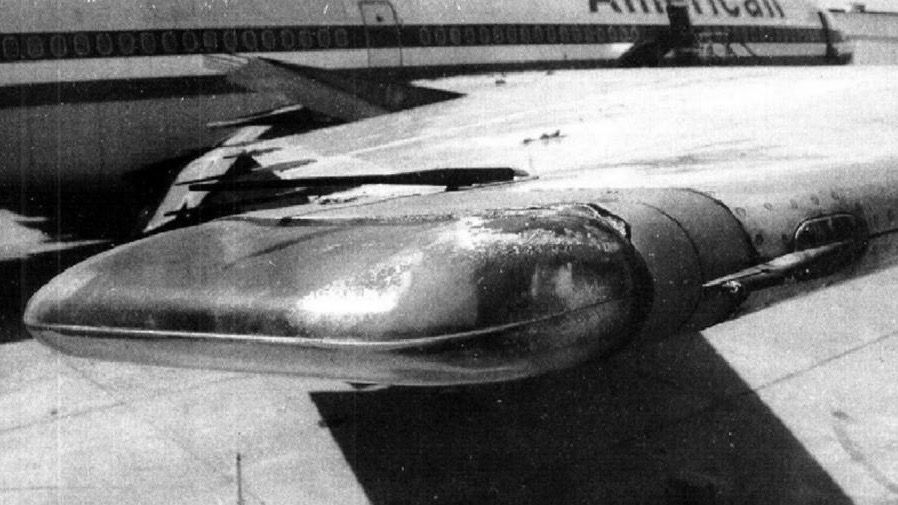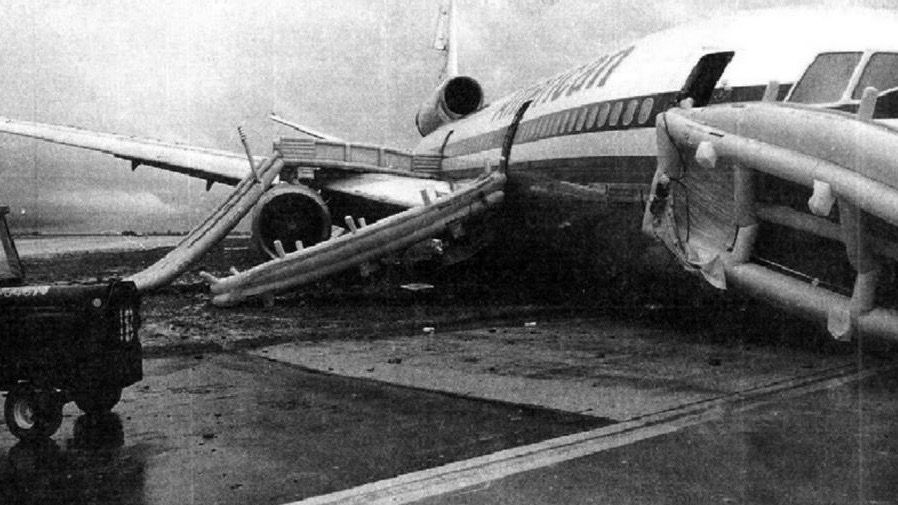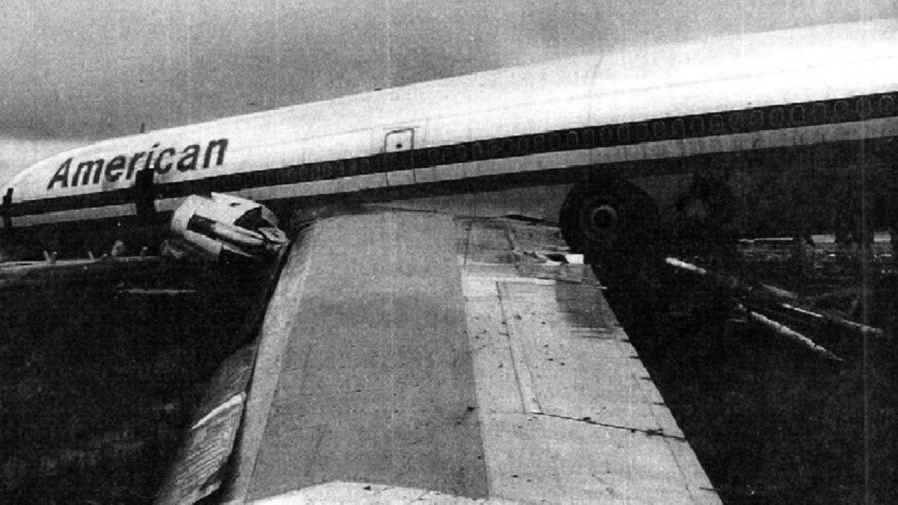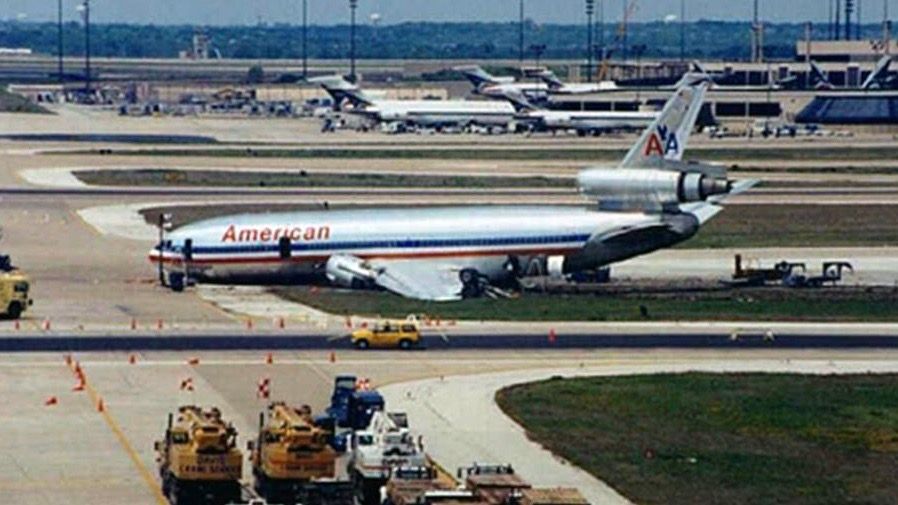It was April 14, 1993. American Airlines flight 102 departed from Honolulu International Airport at 17:53 local time. It was an overnight flight of just over seven hours and most of the passengers were elderly. The McDonnell Douglas DC-10 was bound for Dallas Fort Worth International Airport and had 189 passengers, three flight crew and ten flight attendants onboard.
Thirty minutes to landing
The flight had been uneventful and normal thus far. During the pre-flight briefing, the captain had informed the flight attendants that there might be thunderstorms and turbulence on approach to Dallas. With thirty minutes until landing, the captain made an announcement, telling the passengers that the flight attendants would ’round everything up’ and warned of possible turbulence.
The flight attendants stowed any loose items, checked that passengers’ seatbelts were on, and made sure that the galleys were ‘secure.’ Once complete, they would report to the senior crew member that their area was secured. They would then take their jumpseats for landing. In the meantime, the flight crew was getting weather reports and trying to navigate around the storms. It was raining heavily and the aircraft was surrounded by thunderstorm activity.
Stormy skies
The first officer was flying the DC-10 while the captain was on the radios, and the flight engineer monitored the systems. The weather reports were constantly changing on the approach. At 06:42, there was a crack of thunder, and some of the flight attendants reported a lightning strike on the right wing. At 06:53, there was a second lightning strike.
“Flight attendants, prepare for landing. We’re gonna be on the ground in just about five-six minutes from now and it could be bumpy from here on in. So, just if you would stay in your seats please.”
The captain’s crew call to flight attendants
What happened next?
At 06:56 they were cleared to land. The aircraft was coming in to land on runway 17l, when, at 40 feet agl., the first officer declared a go-around. The captain said “No, no, no, I got it…” and took control of the aircraft. They were in a 10-degree right crab due to crosswinds. There was no time to communicate or assess the situation. The captain had committed the aircraft to landing long on a rain and crosswind swept runway.
He landed on the centerline, but the aircraft was ‘floating’. He tried to correct the aircraft to no avail. A fire had started just behind the left engine. At 06:59, the aircraft veered right off the runway and into mud, and two seconds later, the nosegear collapsed. Ceiling panels fell down, along with some oxygen masks. Some overhead lockers fell open, dispersing luggage and injuring two passengers. The left wing and engine were damaged. The aircraft was steeply tilted to the right with the nose down.
Emergency – evacuate!
The captain called for an emergency evacuation. Only the forward flight attendant heard it, but three flight attendants had already initiated the evacuation alarm. The flight attendants on the right side and forward left side opened their doors and deployed the slides. Because the aircraft was tilted to one side, some slides on the rear right side did not reach the ground. The exits at the rear on the left side were not opened due to the fire. The flight attendants shouted their commands and redirected the passengers where the exits were blocked.
It was dark in the cabin as the emergency lighting did not work, but the crew could see the glow of the fire on the left side. The flight attendants urged the passengers to move quickly, but the evacuation was difficult for elderly passengers who would not jump down the slide. The flight attendants had to push some down the slide. Some passengers were trying to take bags with them despite being told not to and the flight attendants pulled the bags away from them. The evacuation was impeded by the passengers.
The aftermath
One of the flight attendants spotted some of the passengers standing on the wing and not jumping down the slide, so he went outside onto the wing. He saw that some passengers were stuck in the mud at the bottom of the slide and could not get out. They were being injured by those who followed. He ordered them to go back into the cabin and use another exit. Once all the passengers were evacuated, the crew checked the cabin to make sure there was no one else.
Despite the difficulties, the evacuation was calm and quick. The firefighters arrived at the scene within a minute, by which time the aircraft was evacuated, and they put the fire out. It was windy and raining heavily, and the slides were slippery, which did not help matters. There were 40 injuries, including three crew. Two passengers fell from the steep slides and received fractures.
The final report
The cause of the accident was summarized with the following:
“At the time flight AA102 landed at DFW Airport, it was raining and there were numerous thunderstorms in the area. Shortly after touchdown on runway 17L, the pilot lost directional control when the airplane began to weathervane and the captain failed to use sufficient rudder control to regain the proper ground track. The airplane eventually departed the right side of the runway. At the time of landing the wind (a cross wind) was blowing at 15 knots with gusts approximately 5 knots above the steady wind speed.”
The NTSB report commended the flight attendants saying that they had performed in a calm, professional manner, despite the evacuation being complicated and difficult.

